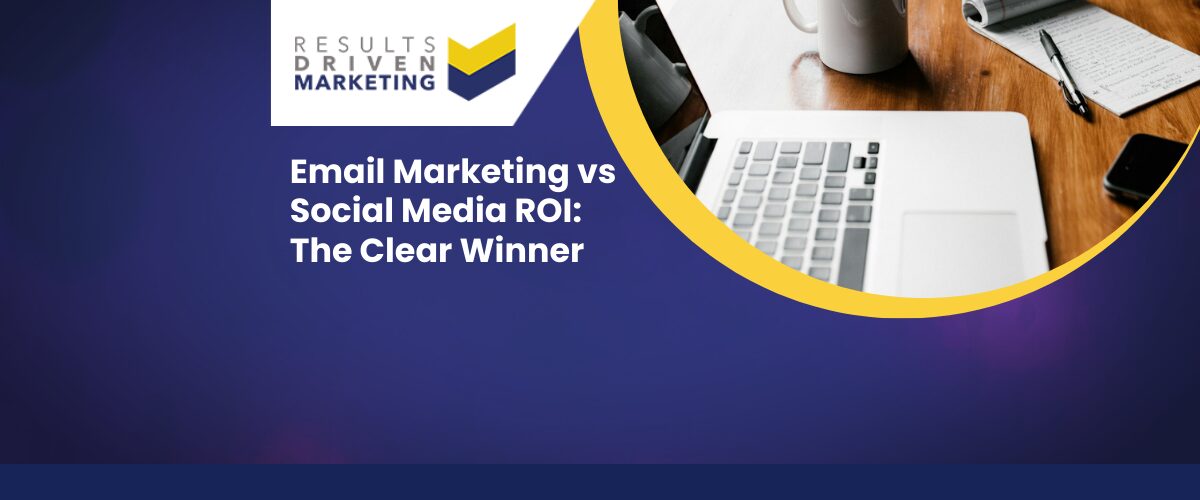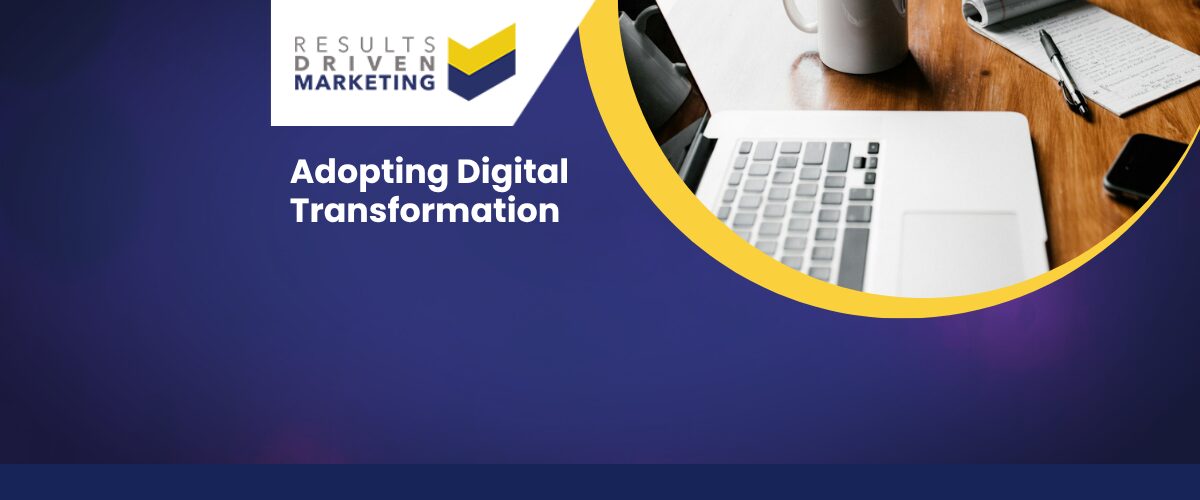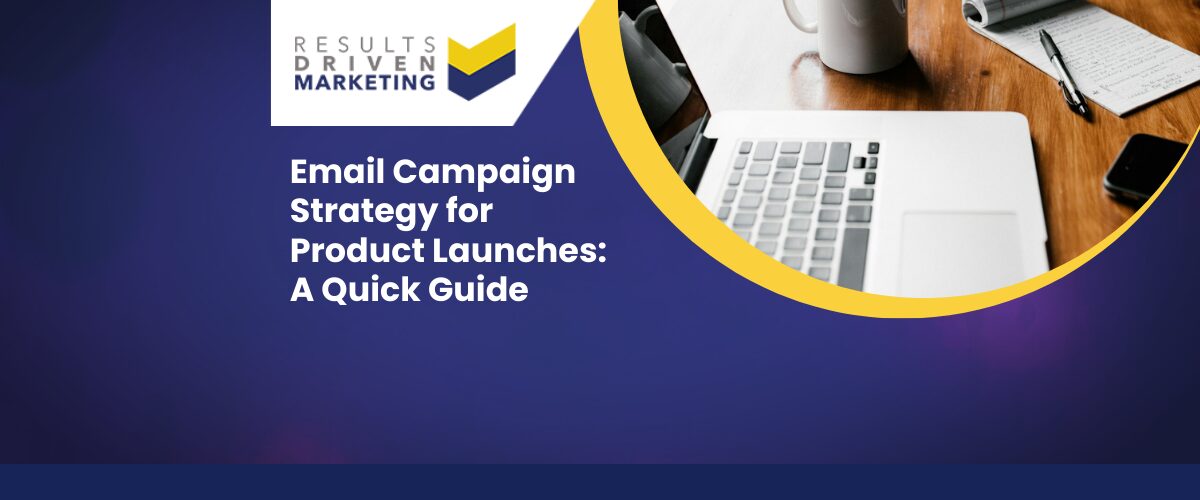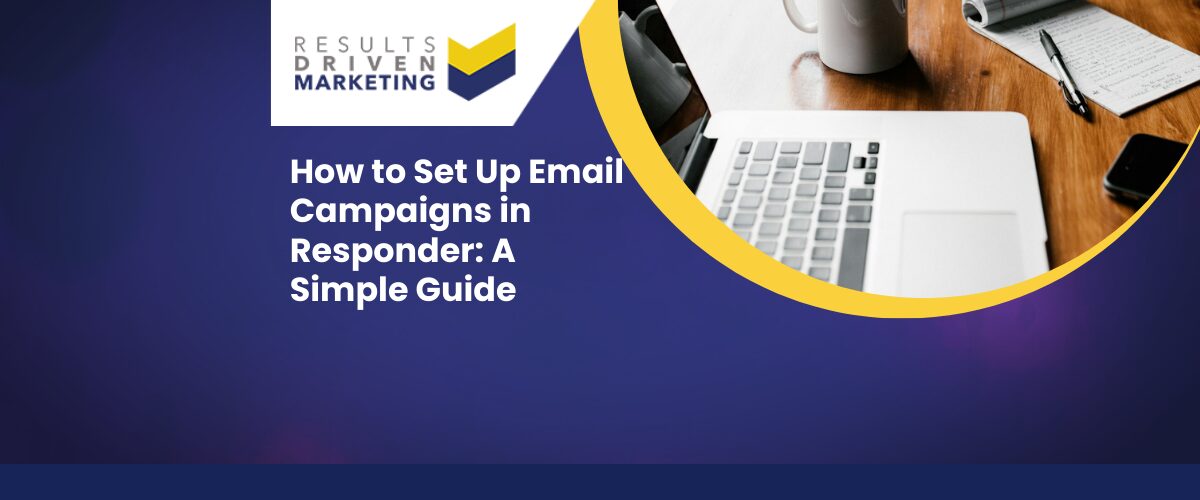
Email Marketing vs Social Media ROI: The Clear Winner
Email marketing vs social media ROI is a head-to-head comparison that matters to your bottom line. As an SME decision-maker, you’re constantly balancing tight budgets with big growth targets. Every marketing pound needs to show a return — fast. But with so many options (and even more opinions), it’s hard to know which channel genuinely delivers better results, especially when you’re using purchased data to fuel your outreach.
At Results Driven Marketing, we speak to owners, marketers, and sales directors every day who ask the same thing: “Where should I focus to get more leads, faster?” This post is here to help you answer that — no fluff, no hype. Just clear comparisons, practical insights, and examples rooted in real campaigns.
By the end, you’ll have a clearer view of which channel is most likely to drive ROI for your business — and how to get there with confidence.
Table of contents:
Why ROI Comparison Matters for Your SME
Making Every Pound Count
For SMEs, marketing isn’t about playing with trends — it’s about investing in what works. Every campaign, whether it’s a cold email or a social media push, needs to justify its cost. That’s where ROI becomes the key metric. If it’s not measurable or profitable, it’s not worth your time.
B2B Data and Cold Outreach Depend on ROI Clarity
When you’re buying data to drive your outreach, the pressure’s even higher. You’re not just investing in a channel — you’re investing in the accuracy, targeting, and relevance of that data. Whether it’s a director-level email list or a CTPS-cleaned telemarketing set, the real question is: how well does that data convert?
Understanding which platform — email or social — actually delivers leads (not just likes or opens) helps you double down on what works and cut the noise from what doesn’t.
Understanding the Basics: What Drives ROI in Each Channel
Before you can decide where to invest, it helps to understand how each channel generates return. Email and social media may both reach your audience — but the way they convert that attention into revenue is very different.
Email Marketing ROI Factors
-
Data accuracy matters: If you’re buying B2B data, the quality and targeting of that list has a direct impact on results. You want decision-makers, not dead inboxes.
-
GDPR and CTPS compliance: For email to work legally and effectively, you need to stay compliant — and still reach the right contacts.
-
Deliverability & open rates: ROI starts with landing in the inbox, not spam folders. Good deliverability = higher response.
-
Response rates and follow-ups: Email gives you control — follow-up sequences, personalisation, A/B tests — all help improve conversion over time.
-
Low cost per contact: Once your list is set, emails are cheap to send, making cost per lead much lower than paid social.
Social Media ROI Factors
-
Ad spend and algorithm dependency: Social success often depends on paying to play — organic reach is limited, especially for B2B.
-
Targeting limitations: Platforms like LinkedIn offer good targeting, but you’re still at the mercy of platform rules and audience behaviour.
-
Brand visibility vs lead generation: Likes and impressions are easy to get — but turning that into a sales call or enquiry? Not always so clear.
-
Time-heavy content production: Social ROI often requires consistent posting, engaging visuals, and time you may not have in-house.
-
Harder to attribute leads: Without direct CTAs or landing pages, it’s tough to know where your leads are coming from — and whether they’re worth the cost.
Side-by-Side ROI Comparison
When it comes to pure results, it pays to compare apples with apples. Below is a practical look at how email marketing and social media measure up across the metrics that actually move the needle for SME campaigns — especially when using purchased B2B data.
| Metric | Email Marketing | Social Media Marketing |
|---|---|---|
| Audience Targeting | Highly precise via segmented B2B lists (industry, job role, size) | Limited by platform tools and broader demographics |
| Cost per Lead | Low — especially with owned/purchased data | Higher — due to ad spend and content costs |
| Conversion Rate | Strong — direct, permission-based outreach | Variable — often weaker for B2B without nurture journey |
| Speed to Market | Fast — campaign-ready in 24 hours | Slower — content planning, approval, and engagement needed |
| Tracking & Attribution | Direct — clicks, opens, replies all measurable | Often indirect — attribution can be unclear |
| Lead Nurturing Potential | Strong — follow-ups, automation, personalisation | Limited — less direct re-engagement, reliant on algorithms |
| Long-Term Value | High — build owned list for future campaigns | Low — content lifespan short, audience ‘owned’ by platform |
What the Table Tells Us
If your goal is lead generation, email marketing holds the clear advantage — particularly when backed by accurate, segmented B2B data. Social has its place (brand awareness, thought leadership), but for direct ROI? Email wins on nearly every front.
Real‑World SME Examples
Example 1: Local B2B Services Firm
A facilities management company in the Midlands purchased a list of 5,000 decision-makers in industrial sectors. They ran a 3-email cold outreach campaign over 2 weeks. Result?
-
Leads generated: 46
-
Appointments booked: 12
-
Cost per lead: Under £15
They tried LinkedIn ads the previous quarter — same budget, fewer than 10 leads, and most weren’t decision-makers. For their sales-focused goals, email outperformed social hands down.
Example 2: Niche Consultancy Business
A tech consultancy aimed to build brand credibility via social. Over 3 months, they gained modest traction — 600 followers, a few likes per post, and one inbound enquiry.
When they switched to a targeted email list of 2,000 senior IT contacts and followed up with personalised outreach, they closed two deals in under six weeks.
The visibility from social helped build trust — but email did the heavy lifting when it came to conversion.
When Social Media Still Earns Its Place
While email often delivers stronger ROI, social media isn’t useless — far from it. Used strategically, it can support your outreach and strengthen your brand over time.
Building Brand Awareness
Social platforms are great for visibility. They help keep your name in front of your audience, especially if you’re in a competitive space or launching something new. It’s a softer touch, but valuable for long-term positioning.
Engaging Visuals and Storytelling
If your offer benefits from demonstrations, before-and-after examples, or storytelling (like case studies), social gives you a chance to show rather than tell. This can warm up colder audiences before they receive an email.
Supporting Your Email Campaigns
The two channels aren’t mutually exclusive. In fact, the best results often come when they work together:
-
Post content that mirrors your email messaging for consistency.
-
Retarget social followers with email offers.
-
Use LinkedIn to build lists of ideal prospects — then reach them directly via email.
So while social might not win the ROI crown on its own, it earns its place in a multi-channel strategy — especially when paired with highly targeted email outreach.
Why Email Marketing Often Wins for Pure ROI
When ROI is the goal — not just reach or awareness — email marketing consistently comes out on top. Here’s why it works so well for SMEs:
Direct Targeting with B2B Data
With a well-segmented list, you’re speaking straight to the right people — by job title, sector, location, and company size. No guesswork, no hoping the algorithm shows your ad to the right person.
Lower Cost Per Lead
Once you’ve purchased your data, the cost to run a campaign is minimal. No ongoing ad fees, no design-heavy content needed. Just sharp messaging and consistent follow-up.
Closer to Sales Conversion
Email opens the door to a direct sales conversation. You can link straight to a demo booking, phone call, or quote request — no distractions, no scrolling past cat videos.
High Measurability
You’ll know what’s working. Opens, clicks, replies — everything is trackable. That means faster optimisations and a clearer picture of your ROI.
Scalable for Growth
Whether you’re sending to 500 or 50,000, the same strategy applies — and results scale up efficiently. It’s a system you can build on, not one you constantly have to feed with content.
Why Choose Results Driven Marketing
At Results Driven Marketing, we don’t just sell data — we help businesses turn it into results.
We understand that when you invest in a campaign, you expect leads, not excuses. That’s why every list we supply is built for performance — tailored by job title, sector, region, and marketing channel to help you connect with the right decision-makers fast.
Here’s What Sets Us Apart:
-
Accurate, Up-to-Date Data
700,000+ monthly updates from top UK sources. You get the freshest possible contacts, reducing wasted effort and boosting conversions. -
Built for Your Campaign Style
Email, telemarketing, or direct mail — we tailor your list to fit your outreach, not the other way around. -
Compliance First, Always
All data meets UK GDPR and CTPS standards — giving you confidence to launch campaigns without legal headaches. -
Speed & Service
Most orders are turned around within 24 hours. And if you need advice on how to maximise your ROI, we’re just a phone call away — no call centres, no fluff.
We’ve helped hundreds of UK SMEs go from bad data to more customers and better profits — and we’d love to help you next.
Contact us to get started.
How to Maximise Email ROI (Action Tips)
You’ve got the right data — now make it work harder. Whether you’re new to cold outreach or looking to improve your results, these tips will help you get more from every email sent.
1. Segment by Relevance
Break your list into smaller groups based on:
-
Industry
-
Job role
-
Company size
This lets you speak directly to their needs — and gets better response rates.
2. Write Like a Human
Avoid jargon or “marketing speak”. Use plain English. Focus on how you solve a problem or save them time/money.
3. Nail Your Subject Line
Keep it short, curiosity-driven, and relevant. Think “Struggling with low response rates?” or “Quick question about your sales process”.
4. Use a Clear Call-to-Action
Be specific. “Book a quick call,” “Get pricing,” or “See a sample list” works better than “Let me know”.
5. Follow Up — Always
Most responses come from follow-up emails. Don’t just send one and hope. Use a 2–3 step sequence to stay front of mind.
6. Track and Improve
Monitor open rates, clicks, and replies. If something isn’t working, change the subject line, tighten your message, or test a different segment.
Summary & Final Takeaway
Email marketing vs social media ROI isn’t just a theoretical debate — it’s a decision that impacts your sales pipeline, campaign spend, and long-term growth.
For SMEs using purchased B2B data, the numbers speak for themselves:
-
Email offers stronger targeting, lower cost per lead, faster results, and more reliable tracking.
-
Social media has value — but mostly as a support channel, not your core engine for lead generation.
If ROI matters (and let’s be honest, it always does), email is the clear winner. But it’s not just about sending messages — it’s about having the right data, the right message, and the right partner.
Need help getting your next campaign moving? Explore our email lists or contact us today.
Results Driven Marketing
Accurate marketing lists for email, telemarketing & direct mail
📍 Newcastle, UK
📞 0191 406 6399
🌐 rdmarketing.co.uk




